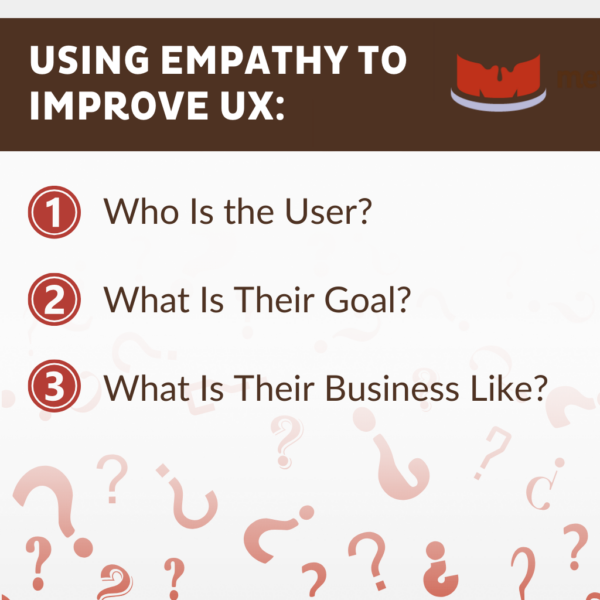
USER EXPERIENCE, WHAT WIREFRAMES ARE, AND OTHER EXPERT WISDOM: INTERVIEW WITH UX DESIGNER JUSTIN DAVIS
User experience (UX) is more than wireframes — the boxes, lines, and lorem ipsum on a page. However, the extent and importance of UX design are often underestimated when someone sets out to create a new digital product.
So, we sat down with Metacake’s former lead UX designer, Justin Davis, to ask him about user experience, what wireframes are all about, and other wisdom he had to share with ecommerce professionals like you.
Interview on Wireframes in User Experience With UX Designer Justin Davis
Q: What exactly is UX?
A: UX (user experience) is the end product. When we create a new digital product, we’re looking to create a specific type of experience for the people using it — that’s the user experience. The process by which we design that experience is what user experience folks, like me, do.

Q: When developing UX, what are the main questions you should ask?
A: UX is about developing an empathetic understanding of the product experience from the user’s point of view and using that perspective to design the product. I think great UX starts with empathy and a very solid understanding of architecture. Having a clear idea of how the experience comes together, end-to-end, is critical. From there, all the details about how specific interactions come together flow organically.
In order to empathize, we need to know a few key things.
First, who are the users? What are they like? What are their lives like? This is the most important piece, because without fully understanding these people, it’s very difficult to design for them effectively.
After that, I want to know what we’re trying to accomplish: What is the goal for the user? What does success look like? How do we know if they’ve been successful? Often, I boil this down to a really simple question: Exactly what are people supposed to do on this site/app/experience?
Also, it’s important to ask about and understand the business. How does the business benefit from the user’s participation? What are the key metrics and items driving revenue? What are key stakeholders expecting in terms of performance?
Q: What’s the difference between UX and wireframing?
A: UX design is the process by which we design excellent experiences for the people using our products. It’s not unlike architecture (the building kind).
Wireframing, on the other hand, is simply a tool, not unlike a blueprint.
A building architect’s job is to take requirements from a client (this building needs to meet X requirements), combine that with the needs of the people who’ll use the building, and develop a concept and design to solve for that tension. During that process, architects use blueprints to communicate design intent — where walls are placed, how lighting is arranged, the details of window panes — in order to assemble the pieces to create the larger experience they’re trying to create.
For UX professionals, wireframes are the same thing: simply one of many methods that help to communicate how to create the experience we’ve designed.
Q: If wireframing is simply a step in the UX development process, what are other common steps or tools?
A: All great UX starts with some type of research. That might be full-blown ethnography, or it might be more lightweight research. Either way, that research is about developing an understanding of the users (the empathy I mentioned earlier).
Once that’s done, there are various other steps, depending on the timeline and scope of the project. Some projects demand an in-depth examination of users, whereby artifacts like personas are created. Architecture diagrams, site maps, and flows are some of the things we create as we work through the high-level architecture phase — understanding how all the pieces come together and how we move users through each part of the experience.
Codifying this architecture into discrete components is usually the most time-consuming part — where we’re figuring out what screens, steps, and interactions will be necessary to facilitate the experience. This is where we generally produce things like wireframes, interaction specs, and other detailed experience documents.
Finally, I think great UX has a built-in feedback loop. This depends on the nature of the project and the relationship that the UX designer has with the client, but once the product is out in the world, careful observation and research of how it’s working for users leads right back into the top of the process.
Developing a great UX is a complicated process with many crucial steps along the way, but if you want to create great products that work (digital or not), it’s a concept you (or whoever you hire to build your digital product) need to become well acquainted with. With competition for user eyeballs getting more and more heated, great UX is only becoming more important.
Final Thoughts on Wireframes and UX
Taking the time to invest in user experience will be critical for you as you curate your brand and product. Developing a deeper understanding of what wireframes are and how UX works will benefit you in the long run. Take advantage of this expert’s wisdom, and you’ll see returns on the investment of your time.
Curious to learn more about what wireframes are in UX? Ready to go a step deeper to develop your skills in this area? Our team would love to help out. Contact us today and let us help you define your next step.
 Justin Davis is an internationally recognized UX (user experience) professional. He started building websites before websites had faces in the mid 90’s and has spent the last 17 years acquiring skills from every stage of the digital product development process. Today there are hundreds of brands (big and small) benefiting from his work.
Justin Davis is an internationally recognized UX (user experience) professional. He started building websites before websites had faces in the mid 90’s and has spent the last 17 years acquiring skills from every stage of the digital product development process. Today there are hundreds of brands (big and small) benefiting from his work.



